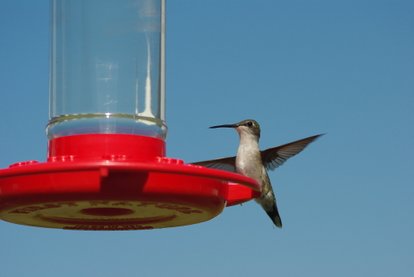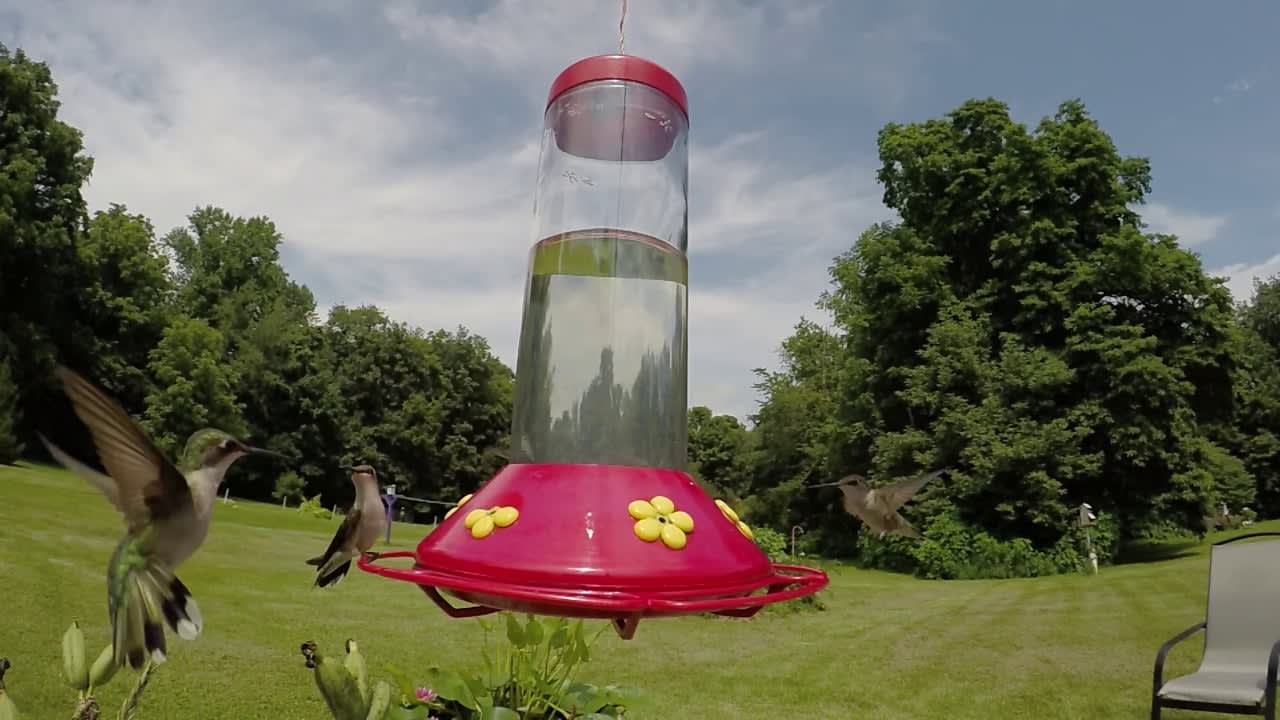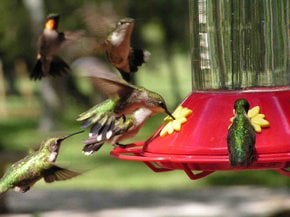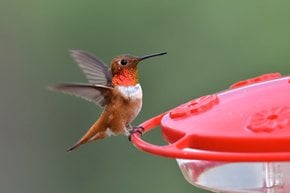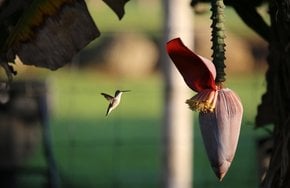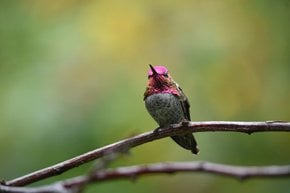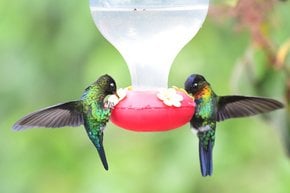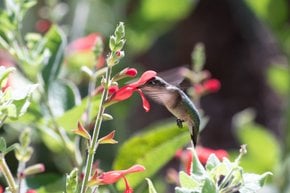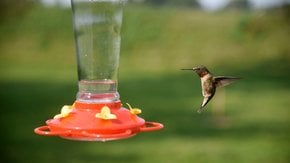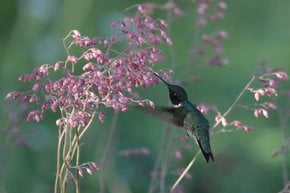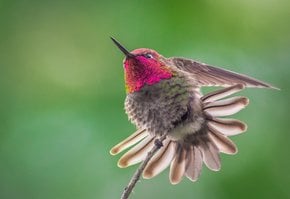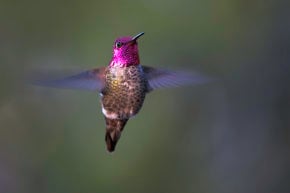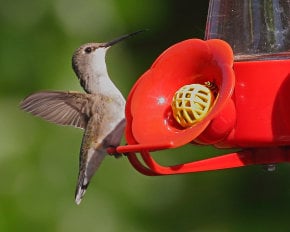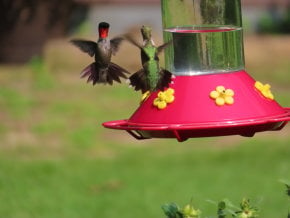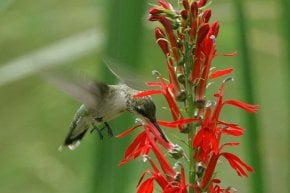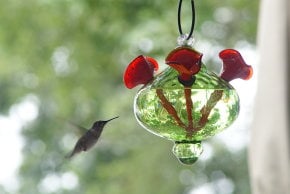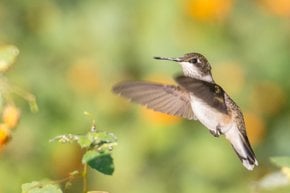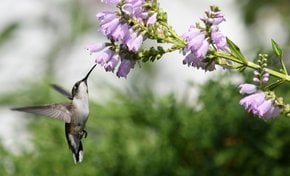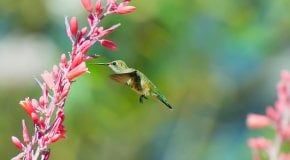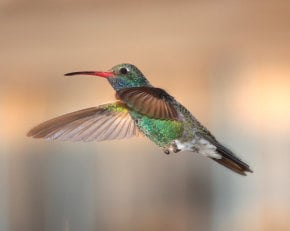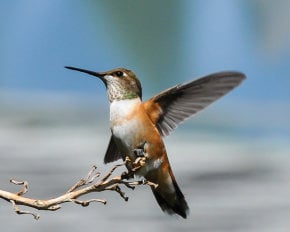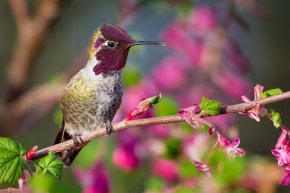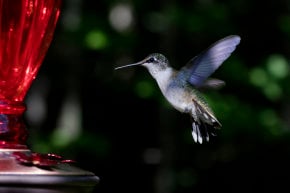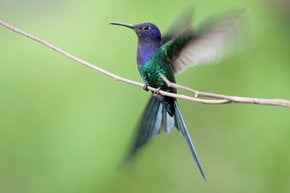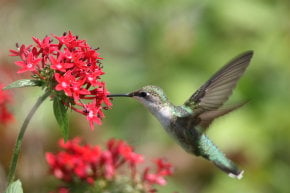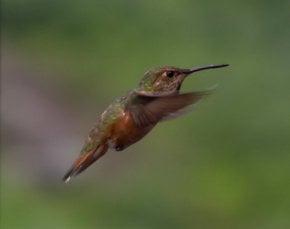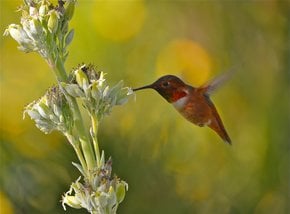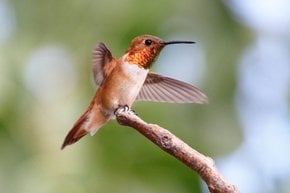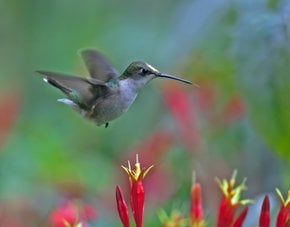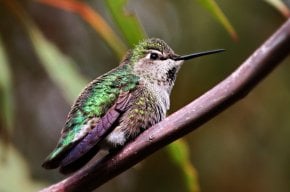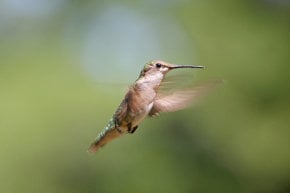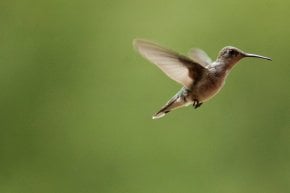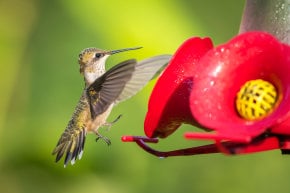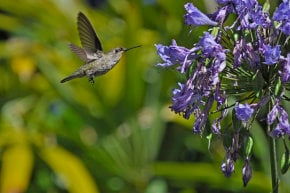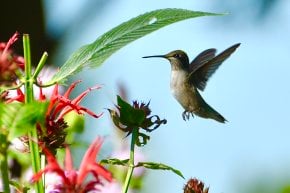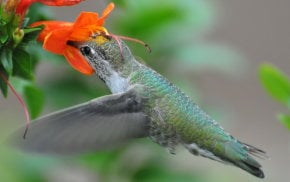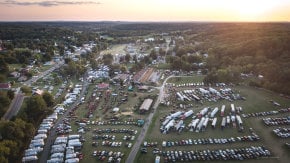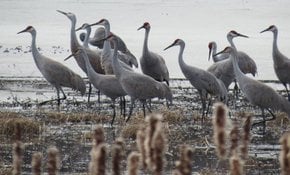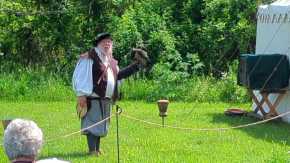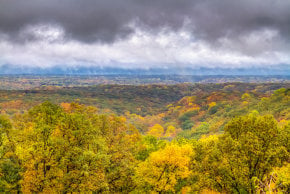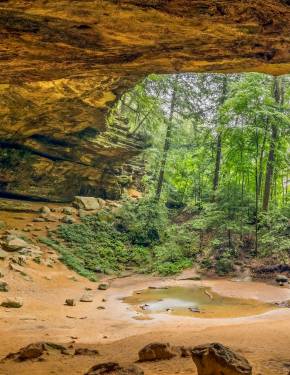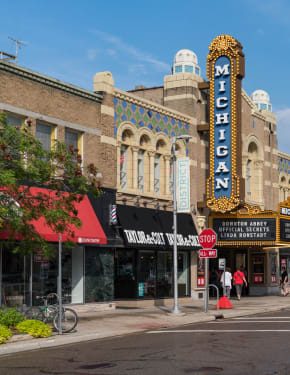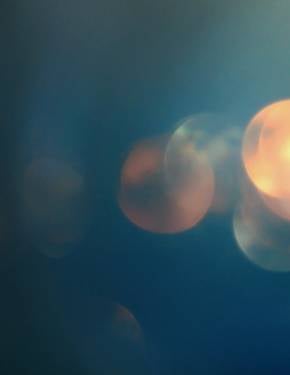Hummingbird Migration in Indiana 2026
Catch a glimpse of native ruby-throated hummers until the tropics beckon them back south
Best time: May–September
Meet the only native breeding hummer of the Northeast—the ruby-throated hummingbird or Archilochus colubris. As spring sets in, these zippy little critters come to nest throughout the Hoosier State, including big cities such as Indianapolis. The first arrivals are recorded in mid-April, and the last stragglers leave by late October. However, the prime season to observe them in your backyard is May through September. A real feeding frenzy occurs in late summer and early fall when they tank up and prepare for the grueling migration south across the Gulf of Mexico to Central America.
Every Hoosier must know how to lure a couple of little humming friends to their window—simply put out a feeder or two. Fill them up with a sweet solution made from a cup of water and 1/4 cup of granulated sugar. Don't add any honey, sweetener, or red coloring, as these could pose a health threat for hummingbirds. To delay spoiling, place the feeder in the shade. Boiling the solution for 2 minutes also helps to slow fermentation. Anyway, you'll have to regularly wash and refill the feeder every three days in warmer weather and once a week in cooler weather.
The last thing to be said is there is no need to take down the feeders. As a rule of thumb, feeders should be kept outside at least for a fortnight after your last sighting. Those who leave their feeders for winter, might be rewarded with such seasonal guests as rufous (Selasphorus rufus) or Allen's (Selasphorus sasin) hummingbirds occasionally seen in Indiana November through January.

